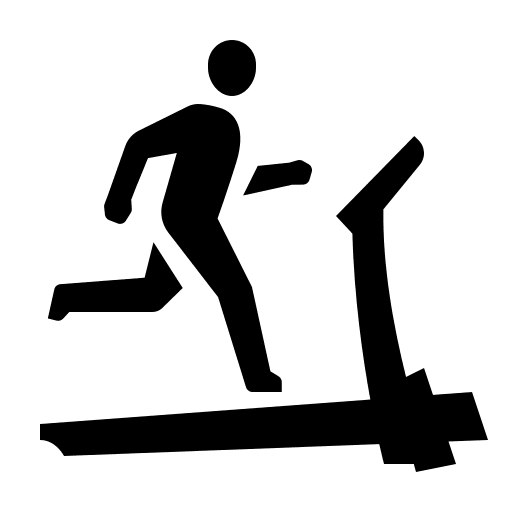The Rise of Manual Walking Pads: A Comprehensive Guide
In today's hectic world, preserving a healthy lifestyle can be a difficulty. For lots of people, finding the time to exercise can be a complicated job, leading to sedentary routines. This is where manual walking pads emerge as a convenient solution that enables users to remain active without jeopardizing their schedules. This blog site post will look into the different aspects of manual walking pads, their advantages, what to think about before acquiring one, and often asked concerns to assist you make notified choices.
What is a Manual Walking Pad?
A manual walking pad is a compact, non-motorized treadmill developed for walking, jogging, or light running. Unlike Treadmill Non Electric that depend on electric motors for speed control and incline adjustments, manual walking pads are powered entirely by the user's movement. They are normally lightweight, portable, and developed for home or office usage, making them a perfect service for busy individuals seeking to integrate workout into their everyday regimens.
Advantages of Using a Manual Walking Pad
- Cost-efficient: Manual walking pads are typically cheaper than their motorized equivalents.
- Space-Saving: Their compact design suggests they can suit small areas, making them ideal for apartment or condos and home workplaces.
- Portable: Most models are lightweight and simple to transport, permitting users to position them in various places.
- No Electricity Required: Since these pads are manual, they do not need a power source, conserving energy and getting rid of issues about electrical risks.
- Mild on Joints: Walking pads supply a low-impact workout, which is much easier on your joints than running or high-impact exercises.
- Customized Pace: Users can stroll at their own speed, making it easy to tailor the strength of their exercise according to their physical fitness level.
Secret Features to Look For
When searching for a manual walking pad, consider the following features:
| Feature | Description |
|---|---|
| Size | Make sure the dimensions fit your offered space and your requirements. |
| Weight | Light-weight models are easier to move and store. |
| Belt Width | A broader belt offers more space and stability for walking. |
| Max Weight Capacity | Inspect the optimum user weight limit to guarantee viability. |
| Security Features | Try to find functions such as emergency situation stop or safety tether. |
| Adjustability | Some models may offer adjustable inclines to increase workout intensity. |
The Manual Walking Pad Market
As the need for home fitness solutions increases, so does the range of manual walking pads offered in the market. Below is a contrast table of some of the popular brands and their noteworthy features:
| Brand | Design | Measurements (LxWxH) | Weight Capacity | Price Range |
|---|---|---|---|---|
| Brand name A | Design 1 | 50" x 24" x 5" | 250 lbs | ₤ 150 - ₤ 200 |
| Brand name B | Model 2 | 55" x 25" x 6" | 300 lbs | ₤ 200 - ₤ 250 |
| Brand C | Design 3 | 48" x 20" x 5" | 220 lbs | ₤ 120 - ₤ 170 |
| Brand D | Model 4 | 60" x 26" x 7" | 350 lbs | ₤ 250 - ₤ 300 |
How to Maximize Your Walking Pad Experience
To get the most out of your manual walking pad, here are some ideas:
- Set a Goal: Establish daily, weekly, and monthly fitness objectives to stay inspired.
- Incorporate into Daily Routine: Use the pad while enjoying television, throughout conferences, or while reading.
- Blend Your Pace: Alternate between quick and slow walking speeds to enhance cardiovascular benefits.
- Use Proper Posture: Stand high, engage your core, and keep your head up to avoid stress.
- Stay Consistent: Aim for at least 30 minutes of walking a day for optimum health benefits.
FAQ About Manual Walking Pads
1. Are manual walking pads ideal for everybody?
Yes, manual walking pads can be appropriate for the majority of people, but people with particular health conditions ought to consult their doctor before beginning any new exercise routine.
2. How much space do I require for a manual walking pad?
While the pad's portability permits simple storage, an area of about 6-10 square feet is generally advised for comfy usage.
3. Can I work on a manual walking pad?
A lot of manual walking pads are designed for walking or light running. Running may be possible but might strain the gadget or user if it's not built for high speeds.
4. How do I keep my manual walking pad?
Keep the pad tidy and totally free of particles, and look for wear on the walking belt and frame. Frequently check it for any loose parts and tighten as needed.
5. Can I use a manual walking pad while working?
Yes, lots of people utilize them while working at a desk, permitting multi-tasking and promoting an active lifestyle at the exact same time.
Manual walking pads provide an outstanding chance for individuals looking to incorporate exercise into their every day lives without overwhelming their schedules. With numerous models offered, understanding their advantages, functions, and considerations will assist you in making an informed option. By embracing these compact physical fitness tools, users can seamlessly incorporate exercise into their routines, paving the method for healthier living.

